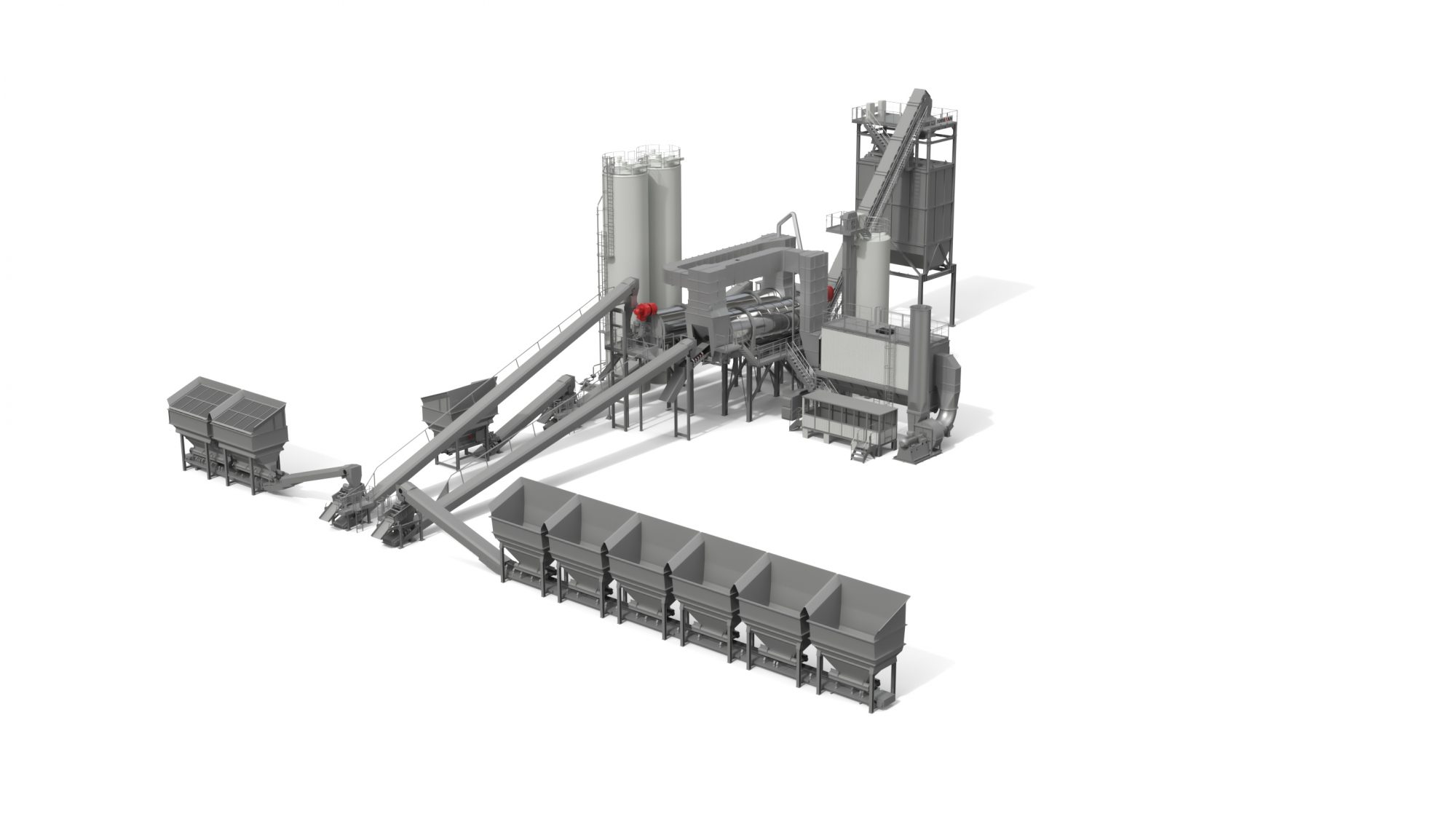Ammann’s ACP ContiHRT
BY AsphaltPro Staff

This February edition of AsphaltPro focuses on recycling, but that doesn’t mean we take a month off from production. Far from it—we include information on increasing recycled material at the production facility. Look specifically at the use of high percentages of reclaimed asphalt pavement (RAP) in the mix designs at your plant. The team at Ammann, Langenthal, Switzerland, has recently introduced a continuous plant to the North American market to handle up to 60 percent RAP without burning the light ends off the replacement binder. Take a look at the information they provided:
The plant’s name—ACP ContiHRT—stands for “Continuous High Recycling Technology.” The Ammann plant incorporates a high percentage of recycled material by taking an innovative approach to the heating process.
Heating is where complications arise. RAP must be heated to between 120 and 130 degrees C. Bringing RAP to this target heat level requires temperatures much higher than 160 degrees C, but temperatures above that range will damage the asphalt cement (AC) that coats the RAP.
When a parallel flow dryer is used, the gas (and heat) moves in the same direction as the aggregate. Specifically, the RAP enters near the burner and is heated as it works its way toward the opposite end of the dryer before being discharged. The dryer is hottest where the RAP enters, and the temperature would have to be well above 160 degrees C to properly heat and dry the aggregate. Therefore, at first glance, the parallel flow process seems unworkable because AC would be damaged upon entry to the dryer.
With a counterflow dryer, the material flows toward the heat, creating the same problem—only at the opposite end. The RAP would be fine when first entering the dryer, but would be damaged as it approaches the burner. The RAH60 dryer, the unique heating system used on the ACP ContiHRT, is designed to solve this.
First, the engineers utilized a parallel flow system that runs at a lower temperature and gently heats the RAP to prevent damage to the AC. The RAP can still reach its target temperature of 120 degrees C when the new aggregate comes into play.
Fresh aggregate is heated in a separate dryer—and at a much higher temperature—because there is no AC to worry about. After heating, the hot, fresh aggregate is mixed with the RAP and in so doing brings the recycled material to its target temperature. The fresh aggregate acts as a second heat source. The gentle heating process does more than protect the coating. It also minimizes fuel usage and emissions. See the related Here’s How it Works department.
Get more information here.
